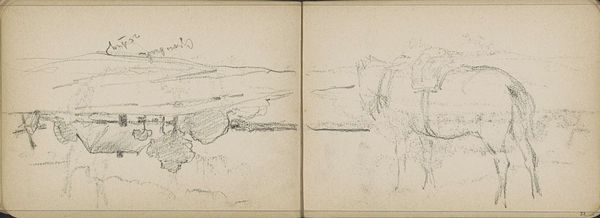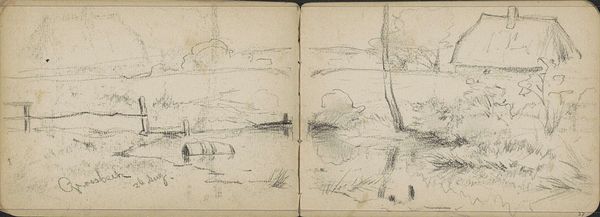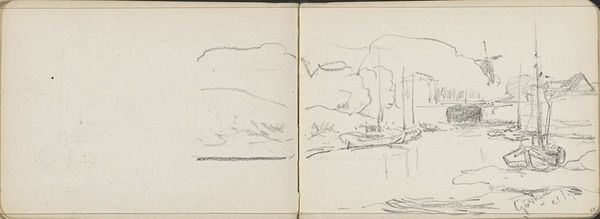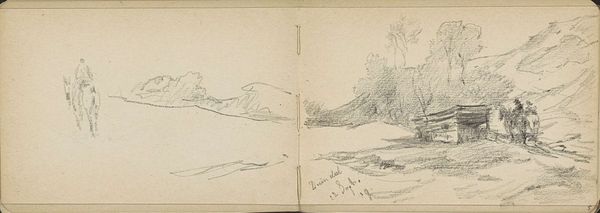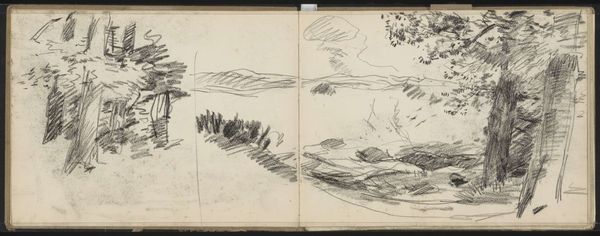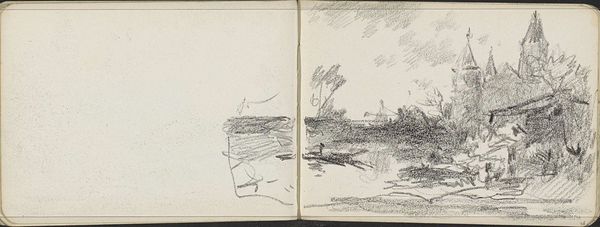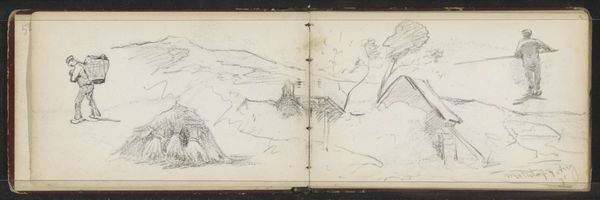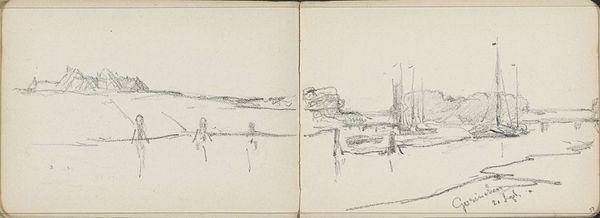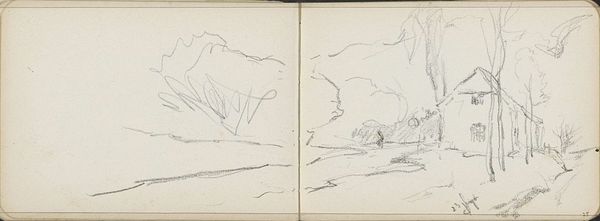
drawing, pencil
#
drawing
#
impressionism
#
landscape
#
pencil
#
realism
Copyright: Rijks Museum: Open Domain
Editor: Here we have George Hendrik Breitner's "Landschap en bebouwing" created around 1880 to 1882. It’s a pencil drawing housed here at the Rijksmuseum. I’m immediately struck by its almost ephemeral quality, like a fleeting impression caught on paper. What can you tell me about it? Curator: It's intriguing how Breitner uses a seemingly casual sketch to capture the essence of a place and time. Looking at this, I’m reminded of the rapidly changing urban landscape of late 19th-century Amsterdam and beyond. He's not just depicting a landscape; he is documenting the social transformations playing out. Do you get a sense of that here? Editor: I do, especially given how he includes the figure within the scenery on the right panel! Is he perhaps showing the relationship between humans and this changing scenery? Curator: Precisely! This era saw a significant shift in how artists approached the depiction of modern life. Breitner wasn't interested in romanticized portrayals of the countryside; he focused on the raw, unfiltered reality of urban and suburban development. What about the composition itself, what does that say about Breitner’s point of view, considering these pieces were drawn during the move toward industrialization? Editor: Well, it appears almost incomplete or fractured, capturing bits and pieces but not telling a whole story. Is it possible he's highlighting how these quick industrial advances disrupt existing modes of life? Curator: That’s insightful. Think about who had the power to determine what was valuable enough to document in that time. These quickly done works by Breitner grant us intimate views into commoner's day-to-day existences. It reveals a narrative where those everyday realities matter. Editor: So, beyond just the landscape, this piece gives voice to the average person as things changed in Europe. I hadn't considered it that way before! Thank you. Curator: And thank you for prompting me to consider its subtle power and its continued importance as an historical artifact.
Comments
No comments
Be the first to comment and join the conversation on the ultimate creative platform.
